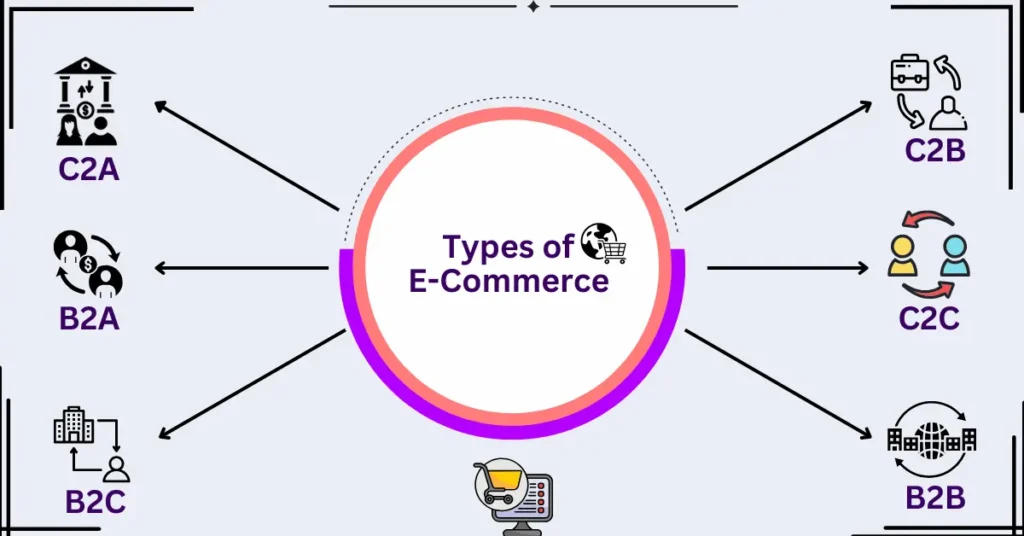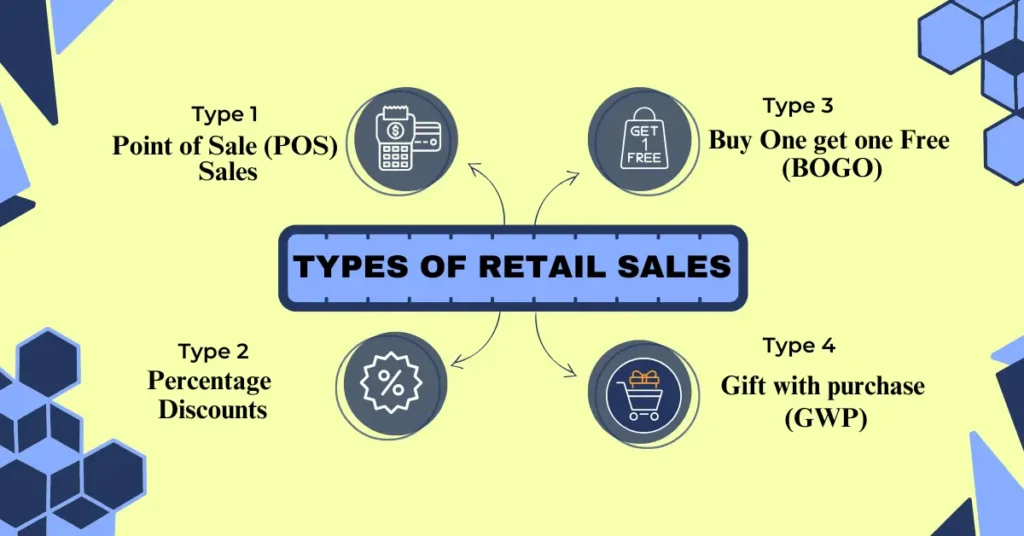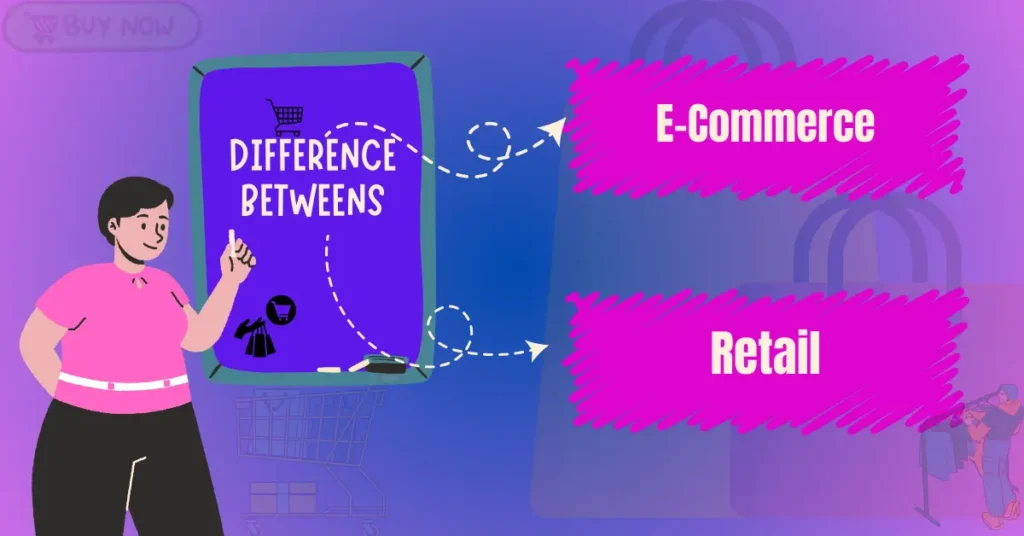Electronic trade, or e-commerce, is the term used to describe the shopping and promotion of products and services through the Internet. It consists of a vast spectrum of online industrial operations enabled by exclusive virtual platforms, which include services, retail, and wholesale. Advances in digital charge strategies, mobile computing, and net generation have had a huge effect on the evolution of e-commerce, turning traditional shopping right into a dynamic and participatory procedure.
E-commerce Website is primarily based on the idea of bringing shoppers and dealers together online. Through websites, mobile programs, or other online systems, customers can interact on this connection from any area inside the international using perusing, deciding on, and buying goods and offerings. The gain of e-trade is that it may reach markets around the clock, circumventing the time and location regulations that come with traditional brick-and-mortar establishments.
The emergence of specialized platforms and marketplaces, like Amazon, eBay, Alibaba, and Etsy, is another consequence of the increase in e-trade. These platforms supply businesses with a platform to connect to a worldwide target market in addition to supplying further services like customer support, advertising and marketing tools, and logistics. A dynamic marketplace that encourages competition and creativity is produced while several sellers and shoppers can be added collectively in one vicinity.
E-commerce has additionally had a huge effect on customer behavior. Consumer behavior has been modified because of the ease of Internet buying, tailor-made recommendations, and centered advertising. The comprehension of patron alternatives is made feasible through records analytics and synthetic intelligence, which helps corporations customize their products and improve the shopping revel in
Several legal and regulatory factors are additionally observed in e-commerce. Online transactions must be done securely and in step with modern policies, which means that concerns like data privacy, cybersecurity, and virtual rights are critical. Regulations governing the gathering, garage, and use of purchaser facts, which include the California Consumer Privacy Act (CCPA) within the US and the General Data Protection Regulation (GDPR) in Europe, need to be observed using groups.
E-commerce has grown, bringing with it benefits and challenges. Convenience and a much broader market reach are only of its many benefits; but, it also comes with challenges along with heightened opposition, the requirement for ongoing technological editions, and the possibility of digital fraud. Companies need to triumph over those obstacles by making huge security investments.
Types of E-commerce:-

- Business-to-Consumer (B2C):- Business-to-consumer (B2C) refers to the shape of a transaction in which an enterprise sells products or services at once to man or woman clients. This is a commonplace version in retail and online buying, wherein agencies cater to the wishes of ordinary human beings in their desire for exclusive businesses. Examples include Amazon, Walmart, and Alibaba.
- Business-to-Business (B2B): Business-to-business (B2B) refers to transactions and interactions between organizations in place of between a business and individual consumers. In this version, businesses offer items, offerings, or answers to other agencies. B2B transactions often involve larger portions, higher values, and more complicated negotiations than B2C transactions. Examples encompass Alibaba Wholesale and ThomasNet.
- Consumer-to-Consumer (C2C): Consumer-to-patron (C2C) refers to transactions wherein human beings promote services or products without delay to different people. This version often takes the form of online structures or marketplaces that facilitate customer interactions.
- Consumer-to-Business (C2B): Consumer-to-Business (C2B) is a version in which personal customers offer products, offerings, or fees to businesses, in a region of the conventional version wherein organizations sell to purchasers. In this association, patrons are the only ones offering rates to commercial enterprises.
Key Components of E-Commerce
Several core elements constitute the e-commerce ecosystem:
- Online Stores and Marketplaces: Websites and structures in which transactions occur. These can range from simple online catalogues to complicated marketplaces with multiple sellers.
- Shopping Carts: Software that lets customers pick items to buy, view their picks, and continue to checkout.
- Payment Gateways: Secure structures for processing bills, including credit score playing cards, digital wallets, and financial institution transfers. Payment gateways ensure the security and accuracy of transactions.
- Order Fulfillment: The manner of choosing, packing, and transporting merchandise to clients. Effective order achievement is vital for purchaser satisfaction and includes logistics and inventory control.
- Customer Relationship Management (CRM): Tools and strategies for handling assistance, which include advertising and advertising, customer support, and feedback structures.
- Digital Marketing: Techniques for selling products and services online, together with SEO (seek engine advertising and advertising), social media advertising and marketing and advertising and marketing and advertising, e-mail campaigns, and paid advertising and marketing.
Benefits of E-commerce:-
- Global Reach: E-trade lets businesses attain an international target market, transcending geographical barriers and increasing market opportunities.
- 24/7 Availability: Online shops are open around the clock, providing customers with the ease of purchasing whenever and anywhere.
- Cost Efficiency: E-trade reduces the want for bodily storefronts and associated overhead charges. Businesses can perform with lower costs and bypass on savings to consumers.
- Personalization: E-commerce platforms can use records to personalize buying reports, offering tailored suggestions and centred promotions based on personal behaviour and options.
- Scalability: E-trade systems can without difficulty scale to house increase, whether through expanding product services, increasing visitors, or entering new markets.
- Data Insights: Businesses can accumulate and analyze information on customer behaviour, sales traits, and market situations, allowing for knowledgeable choice-making and strategic making plans.
Retail Sales:-
Retail sales shape the backbone of the purchaser economy, influencing the whole thing from financial fitness to shopping developments. This difficult discipline encompasses the sale of products and services without delay to consumers, frequently involving an extensive range of agencies small boutiques to multinational chains. As a crucial factor of commerce, retail sales reflect purchaser possibilities and financial situations, making them a key focus for enterprise techniques and economic analysis.
Retail income includes the transactions where items or services are purchased by the end customer. Unlike wholesale sales, which deal with bulk transactions to different companies, retail income consciousness on individual or small quantity purchases made at once with the aid of clients. This area consists of bodily shops, online stores, and hybrid mock-ups catering to various purchaser desires.
Types of Retail Sales:-

Retail sales can be categorized based on various factors:
- Product-Based Retailing: Focuses on promoting bodily products. These consist of categories like clothing, electronics, groceries, and furniture. Each class provides its very own set of demanding situations and opportunities for shops.
- Service-Based Retailing: Involves supplying offerings as opposed to material products. Examples include hair salons, auto restore stores, and economic advisory services.
- Specialty Retailing: Centers around niche markets or specialized merchandise. Speciality stores regularly focus on unique classes, including luxurious items, health and well-being products, or tech devices.
- Discount and Outlet Retailing: Emphasizes selling products at decreased costs. Discount and outlet shops regularly provide clearance or surplus items at Decreased costs.
Keys Components of Retail Sales:-
Several core elements are crucial to understanding retail sales:
- Consumer Behavior: Understanding how clients make shopping selections, such as their options, purchasing patterns, and responses to advertising and marketing and advertising techniques.
- Inventory Management: Efficiently coping with inventory stages to satisfy consumer names without overstocking or walking out of merchandise.
- Pricing Strategies: Setting expenses to draw clients while keeping profitability. This includes competitive pricing, psychological pricing, and discounting strategies.
- Marketing and Promotion: Utilizing diverse techniques to attract and keep clients, collectively with advertising and marketing and advertising, earning promotions, loyalty packages, and digital advertising and advertising.
- Sales Channels: The structures through which income stands up, which include bodily stores, online shops, and cellular programs. Each channel offers precise blessings and calls for tailor-made strategies.
Future Trends:-
The future of retail sales is likely to be shaped by several emerging trends:
- Sustainability: As clients turn out to be extra privy to environmental issues, there is a developing call for sustainable and ethically sourced merchandise. In response, retailers are adopting green practices and expanding their variety of inexperienced merchandise.
- Personalization: Advances in information analytics and AI allow outlets to offer distinctly personalized purchasing studies, which include tailored recommendations and customized promotions.
- Social Commerce: The integration of social media and e-trade allows consumers to shop immediately through social systems, influencing shopping behaviour and logo engagement.
- Subscription Models: Subscription-primarily based offerings are gaining popularity, offering clients convenience and extraordinary access to services or products on a routine basis.
- Experience-Driven Retailing: Retailers that specialize in creating memorable and tasty shopping reports, both in-keep and online, to attract and keep clients.
Difference between E-commerce Vs. retail

| Aspects | E-commerce | Retail |
| Definition | Buying and selling goods or services online. | Buying and selling goods or services in physical stores. |
| Location | Online, accessible from anywhere with internet. | Physical stores located in specific locations. |
| Accessibility | Typically available 24/7. | Limited by store hours, usually during the day. |
| Geographical Reach | Operates through websites or apps, accessible from anywhere with internet. | Operates in physical locations like stores, malls, or shops. |
| Inventory Management | Managed digitally, often with real-time updates. | Managed manually or with in-store systems, sometimes less real-time. |
| Customer Interaction | Digital communication through emails, chats, or social media. | Face-to-face interaction with customers. |
| Sales Channels | Web/app | Store |
| Payment Methods | Online payments through various methods like credit cards, digital wallets, etc. | In-store payments with cash, credit/debit cards, and sometimes mobile payments. |
| Shipping/ Delivery | Goods shipped to the customer’s address, often with options for delivery times. | Customers take the goods home immediately. |
| Returns/ Exchanges | Often handled through online processes, with shipping involved. | Typically handled in-store, with direct customer interaction. |
| Marketing Strategies | Digital marketing (SEO, social media, email campaigns). | Traditional marketing (print ads, store promotions, etc.). |
| Customer Data | Can be impersonal; relies on digital interface and reviews. | More personal interaction; immediate feedback and assistance. |
| Costs | Lower overhead costs (no physical store rent or utilities). | Higher overhead costs (rent, utilities, staff wages). |
| Personalization | Can use data analytics for personalized recommendations. | Personal interaction allows for tailored advice. |
| Inventory Display | Digital listings with images and descriptions. | Physical items displayed in-store. |
Conclusion:-
Knowing the differences between traditional retail and e-trade in a brand-new converting market is essential to developing a robust digital advertising and marketing plan. Social Baniya, a virtual advertising enterprise, has a unique function to use those statistics to create advertising strategies that work for clients in both industries. This is an intensive analysis of the distinctions between retail and e-trade and how those variations should impact marketing strategies:
A stable content marketing method, which includes producing relevant and tremendous fabric, is beneficial for e-trade organizations. Comprehensive product descriptions, video content material, and running a blog are effective methods to grow organic visitors to e-trade websites. To boost search engine ranks and draw in more site visitors, Social Baniya can assist clients in creating a content material plan that complies with search engine marketing fine practices.
Effective advertising and marketing requires a consumer-centric strategy, no matter the platform. For Social Baniya to create techniques that connect with target audiences, it must give attention to knowledge of client wishes, options, and pain regions. Social Baniya can assist customers in fostering closer bonds with each other and accomplishing long-term fulfilment with the aid of placing the client’s level first.
Looking it up, both traditional retail and e-commerce gift exceptional chances and problems that want specialized advertising processes. The aim of e-commerce ought to be to grow online sales and patron involvement by making use of statistics analytics, personalization, and international attain. Improving local presence, fusing virtual and physical experiences, and employing community-targeted advertising strategies have to be the principal priorities for conventional retail.
As a digital marketing enterprise, Social Baniya has a very good function to assist customers in each industry with the aid of presenting creative, records-driven solutions that meet their unique necessities. Through an intensive grasp of the precise traits of both retail and e-commerce, Social Baniya can expand advertising strategies that efficaciously stimulate growth, enhance consumer satisfaction, and meet organizational dreams.
FAQ’s:-
- What is E-commerce?
Ans. The term “e-commerce” describes the online purchasing and selling of goods and services via websites, mobile applications, and other digital platforms. It includes doing business online and can encompass several different types of digital commerce.
- What is traditional retail?
Ans. In traditional retail, products and services are sold in person through actual storefronts. It includes all in-person transactions carried out in real places including stores, malls, and boutiques.
- What are the key advantages of e-commerce?
Ans. Global Reach: Access to a worldwide customer base.
- Convenience: Available 24/7 for shopping.
- Lower Overhead Costs: No need for physical storefronts.
- Personalization: Tailored marketing through data analytics.
- How does e-commerce handle shipping and delivery?
Ans. Logistics firms are essential to e-commerce since they manage delivery and shipping. Products are transported to the customer’s address from warehouses or fulfilment centres; shipping might take time and money.
- What security measures are in place for traditional retail?
Ans. Traditional retail focuses on physical security measures such as surveillance cameras, security personnel, and anti-theft devices to protect against theft and ensure a safe shopping environment.
- How does e-commerce utilize digital marketing?
Ans. E-commerce businesses leverage digital marketing strategies such as SEO, PPC advertising, email marketing, social media campaigns, and influencer partnerships to drive traffic and increase sales.
- What are the scalability options for e-commerce businesses?
Ans. E-commerce companies can grow by adding more products to their inventory, breaking into new markets, and enhancing online visibility. Because there are no restrictions on physical space, scalability is frequently simpler.
- How does e-commerce handle market competition?
Ans. To stand out in a crowded online industry, e-commerce enterprises compete using a variety of tactics, including competitive pricing, distinctive product offerings, outstanding customer service, and intensive digital marketing campaigns.
- How do traditional retail stores manage competition?
Ans. Conventional retail establishments maintain a competitive edge by offering exceptional customer service, exclusive in-store promotions, loyalty plans, and an engaging shopping environment that draws and keeps customers.
